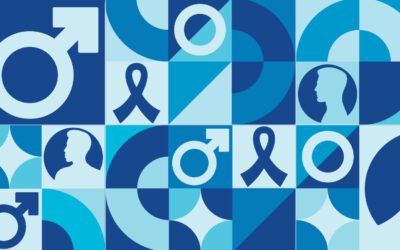As we wind down celebrations, set resolutions, and look to opportunities and challenges of the new year, many of us will refocus on aspects of our health we may have overlooked during the holiday season. Changes in our diet and holiday travel may have exacerbated certain health conditions. One such condition is headaches. Headaches are one of the most common pain syndromes and can be classified as primary or secondary. Secondary headaches have an underlying disease or medical condition as the root cause, whereas primary headaches are not caused by an underlying illness, disease, or anatomical abnormality. Primary headaches can be broken down into four categories: migraine headaches, tension-type headaches, trigeminal autonomic cephalalgias (TAC), and other headaches that do not have a specific cause. This month, we will focus on primary headache syndrome as they comprise ninety percent of headaches and are likely to impact up to eighty percent of the population at some point in life.
TENSION HEADACHE
Tension headaches are by far the most common of all headache syndromes. Tension headaches tend to occur most often between the ages of thirty and thirty-nine years of age, and are the common result of poor posturing, dehydration, or even stress. Tension headaches most often affect the bilateral temporal region and are described as “band-like” in nature. Symptoms are usually mild to moderate in intensity and usually not associated with nausea or vomiting. While sensitivity to light or sound may occur, it is unusual to experience both. Treatment of tension headaches should focus on identifying possible triggers: i.e. poor posture, eye strain, or excessive stress. Symptomatic treatment with over-the-counter pain relievers such as acetaminophen (Tylenol) or ibuprofen (Motrin) is considered first-line and usually adequate for symptom relief. Combination treatment of caffeine with pain relievers may be employed if those medications alone do not provide adequate relief. However, overuse of over-the-counter medications for tension type headaches may increase the incidence of Medication Overuse Headache associated with excessive medication use. Opioid pain relievers should not be used in the treatment of tension headaches due to the risk of opioid dependency. Relaxation, massaging the temples, and frequent breaks during prolonged screen time may help recurrent tension type headaches.
CLUSTER HEADACHE (TRIGEMINAL AUTONOMIC CEPHALALGIAS)
Trigeminal Autonomic Cephalalgias is commonly referred to as a cluster headache. Symptoms include severe pain occurring on one side, often around the eye or temporal region. The pain is usually associated with tearing, redness of the eye, or nasal drainage on the same side of the face as the pain. Additionally, sweating and swelling on the same side of the face may occur, as well as abnormal sensations of the ear and constriction of the pupil occurring on the same side. Cluster headaches occur in attacks that may last from minutes to hours and occur up to eight times per day during a flare-up. Those affected are usually restless or anxious during the episodes. Interestingly, flares may be cyclical in nature, occurring most commonly in the spring and fall around the time of the equinox. It is also common to see the pain begin as a person is entering the REM cycle of sleep. This points to a relation between cluster headaches and disruption of the normal sleep cycle. The acute pain of a cluster headache is treated with high flow oxygen therapy, subcutaneous injection of a triptan class of medication, and high dose corticosteroids. Preventative treatment usually involves the use of a special group of medications known as calcium channel blockers.
MIGRAINE SYNDROME
Migraine syndrome may affect up to twenty percent of the population resulting in an estimated 1 billion people affected worldwide. The mechanism behind migraines involves a complex relationship between a specific group of brain cells and nearby blood vessels. Symptoms of migraine onset include moderate to severe pain, with throbbing affecting one side of the head. Pain is usually associated with nausea or vomiting as well as the presence of both light and sound sensitivity. Migraine syndromes may last hours to days. Some patients experience visual auras prior to the onset of migraine. Auras may occur as visual disturbances, sensory changes, inability to speak, or less commonly, motor weakness.
Treatment of migraine syndrome is the focus of many therapeutic interventions. However, prevention through the avoidance of migraine triggers should be the foundation of care. Utilizing a headache diary is most helpful in identifying triggers. By recording the headache symptoms as well as recent food intake or activities, the affected individual may be able to identify specific foods or activities associated with migraine onset for future avoidance. After the onset of migraine symptoms, acute therapy should be used to stop migraine progression as soon as possible before the inflammatory process becomes well established. This has historically been accomplished with a class of medications known as triptans. However, triptans may be associated with adverse gastrointestinal and cardiovascular events in some patients. Recently, a new class of medications known as calcitonin gene-related peptide inhibitors has been used for both acute and preventative therapy with less adverse gastrointestinal and cardiovascular events.
In a select group of patients the frequency of migraines may affect their quality of life to the point that preventative therapy is necessary. Likewise, in patients whose migraines result in temporary motor weakness, preventative therapy is used to avoid debilitating symptoms. A wide range of medications have been historically prescribed for migraine treatments including anticonvulsants, antihypertensives, and natural supplements. Most recently, the calcitonin gene-related peptide inhibitors in the form of injectable agents (Aimovig/Ajovy/Emgality) or oral agents (Nurtec/Ubrelvy/Qulipta) have been prescribed for preventative treatment.
PREVENTION
While headache syndromes can be a source of discomfort and dysfunction, as with many health care concerns, avoidance of triggering factors goes a long way in prevention of illness. Adequate sleep, hydration, and a healthy diet can decrease the incidence of primary headache syndromes. Attention to posture and body ergonomics may reduce incidence of tension headaches from muscle strain. While over-the-counter medications may provide relief for the occasional headache, overuse of medication can increase the frequency of headaches. Finally, there are exciting new treatments for patients who suffer from migraine syndrome. These treatments should be discussed with your physician to determine the best treatment for your unique healthcare needs.
Kendall Wagner, M.D. is a regular healthcare contributor to Do South Magazine.
Chaffee Crossing Clinic
11300 Roberts Boulevard, Fort Smith, Arkansas
479.242.5910
chaffeecrossingclinic.com




